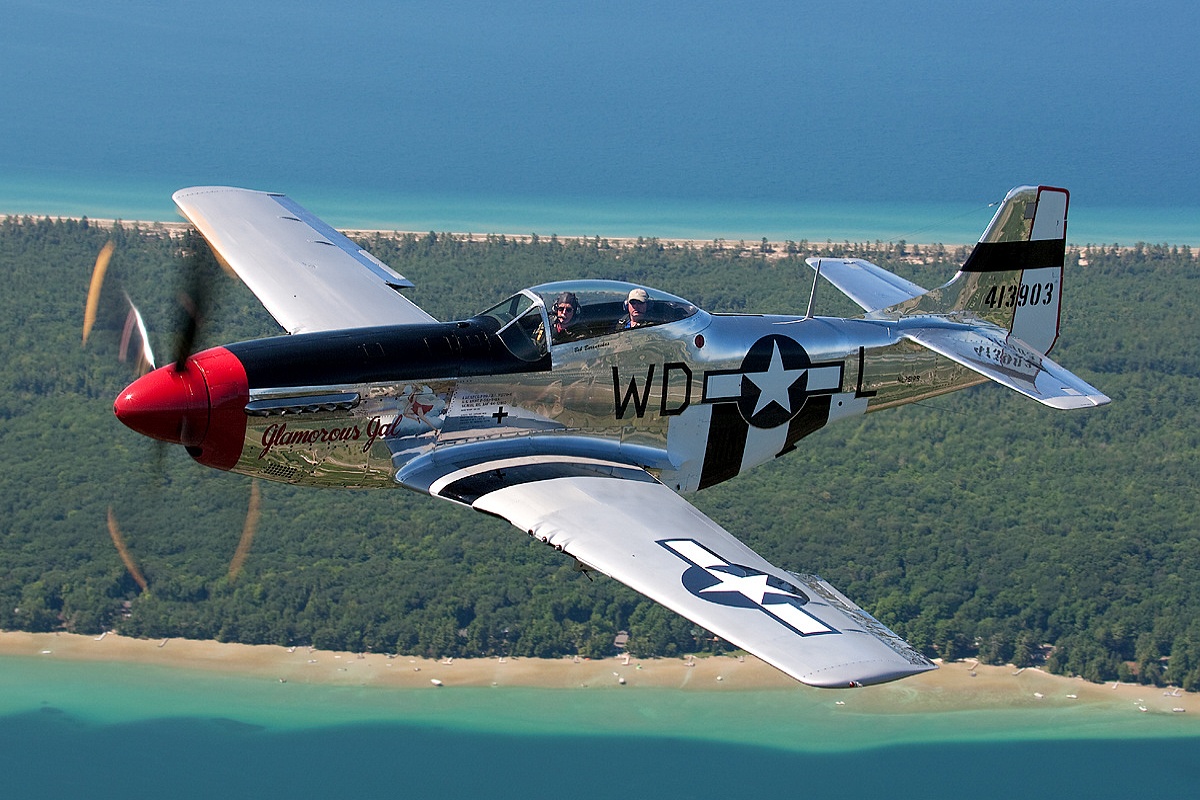 The North American P-51 Mustang is a single-seat long-range fighter. During World War II, it became one of the most successful and fastest Allied reciprocating fighters. During this conflict, the machine served in more than 40 USAAF fighter groups and 31 RAF squadrons. The aircraft proved so successful that the Americans used it as the main fighter and fighter aircraft at the beginning of the Korean War. He also appears in a number of war films, which certainly include The Tuskegee Airmen and Red Tails. He will also appear briefly in one part of the animated series Futurama, loosely translated as Roswell’s Ruffle.
The North American P-51 Mustang is a single-seat long-range fighter. During World War II, it became one of the most successful and fastest Allied reciprocating fighters. During this conflict, the machine served in more than 40 USAAF fighter groups and 31 RAF squadrons. The aircraft proved so successful that the Americans used it as the main fighter and fighter aircraft at the beginning of the Korean War. He also appears in a number of war films, which certainly include The Tuskegee Airmen and Red Tails. He will also appear briefly in one part of the animated series Futurama, loosely translated as Roswell’s Ruffle.
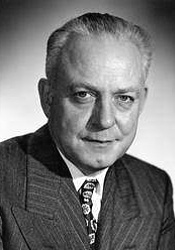 In 1938, the British government set up a purchasing commission in the United States, headed by Sir Albert Henry Self. As the aviation representative of this commission, he had full responsibility for the purchase of American aircraft meeting the requirements of the RAF. At that time, however, the choice was minimal, as no aircraft manufactured in the United States met European standards. The only machine approaching them was the Curtiss P-40 Tomahawk. However, Curtiss-Wright produced the P-40 at the limit of its production capacity, so there was a shortage of these fighters. At that time, North American Aviation was already building NA T-6 Harvard training aircraft for the RAF, but its production capacity was not nearly as busy as it was at Curtiss-Wright. At the time, NAA President James Howard Kindelberger addressed Sir Henry Self with an offer to sell a new North American B-25 Mitchell medium bomber. Instead of answering, he was unexpectedly asked if they would be able to produce the aforementioned Curtiss P-40 Tomahawk aircraft under license for the RAF. Kindelberger replied at the time that they were able to design a better concept and construct it within 120 days.
In 1938, the British government set up a purchasing commission in the United States, headed by Sir Albert Henry Self. As the aviation representative of this commission, he had full responsibility for the purchase of American aircraft meeting the requirements of the RAF. At that time, however, the choice was minimal, as no aircraft manufactured in the United States met European standards. The only machine approaching them was the Curtiss P-40 Tomahawk. However, Curtiss-Wright produced the P-40 at the limit of its production capacity, so there was a shortage of these fighters. At that time, North American Aviation was already building NA T-6 Harvard training aircraft for the RAF, but its production capacity was not nearly as busy as it was at Curtiss-Wright. At the time, NAA President James Howard Kindelberger addressed Sir Henry Self with an offer to sell a new North American B-25 Mitchell medium bomber. Instead of answering, he was unexpectedly asked if they would be able to produce the aforementioned Curtiss P-40 Tomahawk aircraft under license for the RAF. Kindelberger replied at the time that they were able to design a better concept and construct it within 120 days.
 In the first four months of 1940, NAA chief engineer John Leland Atwood intensively discussed the specifications of the proposed aircraft with British engineers and officials. Self was very concerned that North American Aviation had never designed a fighter herself before, so he insisted on obtaining and studying drawings of a Curtiss XP-46 experimental aircraft, including wind tunnel tests, before the NAA provided them with detailed construction drawings of their concept. North American Aviation therefore purchased drawings and data from Curtiss-Wright for £ 56,000, confirming a contract with the British Purchasing Commission for the new aircraft. The resulting detailed construction drawings and the signing of the beginning of the Mustang project took place on May 4, 1940, which was followed 25 days later by a firm order of 320 machines. These aircraft were referred to in the RAF as the Mustang Mk.I. The British Purchasing Commission set requirements for the armament of four 7.7 mm machine guns, delivery of the first serial machine by January 1941, and costs not to exceed $ 40,000 each.
In the first four months of 1940, NAA chief engineer John Leland Atwood intensively discussed the specifications of the proposed aircraft with British engineers and officials. Self was very concerned that North American Aviation had never designed a fighter herself before, so he insisted on obtaining and studying drawings of a Curtiss XP-46 experimental aircraft, including wind tunnel tests, before the NAA provided them with detailed construction drawings of their concept. North American Aviation therefore purchased drawings and data from Curtiss-Wright for £ 56,000, confirming a contract with the British Purchasing Commission for the new aircraft. The resulting detailed construction drawings and the signing of the beginning of the Mustang project took place on May 4, 1940, which was followed 25 days later by a firm order of 320 machines. These aircraft were referred to in the RAF as the Mustang Mk.I. The British Purchasing Commission set requirements for the armament of four 7.7 mm machine guns, delivery of the first serial machine by January 1941, and costs not to exceed $ 40,000 each.
 The prototype NA-73X, designed by the team of chief engineer Edgar O. Schmued, used several design innovations in the construction of the kite, which later fundamentally affected the overall characteristics of the machine. One of them was the use of a completely new laminar profile of the NAA/NACA 45–100 wing, which was characterized by low air resistance even at high speeds. Another novelty was a new set of single-channel water and oil coolers located behind the wings at the bottom of the fuselage, which again managed to reduce the overall air drag coefficient of the aircraft airframe. Interestingly, this prototype was also one of the first aircraft to have a fuselage mathematically designed using conical sections. The result was a smooth kite surface with low air resistance. When designing this machine, attention was paid to modularity during production and therefore the aircraft kite was divided into five main sections. The front, middle, rear part of the fuselage and two halves of the wing, which were before the final assembly equipped with all cabling and wiring.
The prototype NA-73X, designed by the team of chief engineer Edgar O. Schmued, used several design innovations in the construction of the kite, which later fundamentally affected the overall characteristics of the machine. One of them was the use of a completely new laminar profile of the NAA/NACA 45–100 wing, which was characterized by low air resistance even at high speeds. Another novelty was a new set of single-channel water and oil coolers located behind the wings at the bottom of the fuselage, which again managed to reduce the overall air drag coefficient of the aircraft airframe. Interestingly, this prototype was also one of the first aircraft to have a fuselage mathematically designed using conical sections. The result was a smooth kite surface with low air resistance. When designing this machine, attention was paid to modularity during production and therefore the aircraft kite was divided into five main sections. The front, middle, rear part of the fuselage and two halves of the wing, which were before the final assembly equipped with all cabling and wiring.
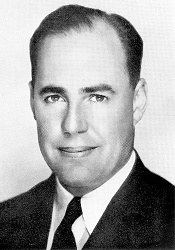 The prototype was put into operation in September 1940, just 102 days after placing the order. On October 26 of the same year, it was first lifted into the air by aeronautical engineer and test pilot Vance Breese. To save weight, this machine had its partly monococo fuselage made entirely of aluminum. He was armed with four 7.7 mm machine guns located in the wings and two synchronized 12.7 mm machine guns located under the Allison V-1710-F3R engine. Although the United States Air Force (USAAC) could block any sale at the time that it considered unfavorable to US interests, NA-73 was considered an exception because it was designed at the initiative of the British Purchasing Commission. In order not to interrupt the supply of machines, Colonel Oliver P. Echols agreed with the purchasing commission to provide two aircraft for evaluation. These were machines of serial numbers 41-038 and 41-039, which were then tested in the USAAC under the designation XP-51. Later, another three hundred pieces of Mk.I began to arrive in England on the basis of a second order, which the NAA referred to as NA-83 due to small design differences.
The prototype was put into operation in September 1940, just 102 days after placing the order. On October 26 of the same year, it was first lifted into the air by aeronautical engineer and test pilot Vance Breese. To save weight, this machine had its partly monococo fuselage made entirely of aluminum. He was armed with four 7.7 mm machine guns located in the wings and two synchronized 12.7 mm machine guns located under the Allison V-1710-F3R engine. Although the United States Air Force (USAAC) could block any sale at the time that it considered unfavorable to US interests, NA-73 was considered an exception because it was designed at the initiative of the British Purchasing Commission. In order not to interrupt the supply of machines, Colonel Oliver P. Echols agreed with the purchasing commission to provide two aircraft for evaluation. These were machines of serial numbers 41-038 and 41-039, which were then tested in the USAAC under the designation XP-51. Later, another three hundred pieces of Mk.I began to arrive in England on the basis of a second order, which the NAA referred to as NA-83 due to small design differences.
The disadvantage was the engine with a single-stage compressor, which rapidly lost power at altitudes above 4600 m. Although Alllison’s attempts to develop a more powerful engine with sufficient power were poorly funded, they produced the V-1710-45 power unit. He had an auxiliary compressor with variable speed installed and was able to develop an output of 860 kW even at 6800 m. In November 1941, the NAA studied the possibility of using it, but adapting its excessive length to the Mustang would require extensive modifications to the airframe and would cause long delays in production. The next version of the NA-91 was armed with four 20 mm cannons in the wing. The disadvantage was still the engine, which had the already mentioned problems with performance at higher altitudes. The Royal Air Force, therefore, used these machines, known as the Mk.IA, from July 1942 used only for reconnaissance and attacks on ground targets at low altitudes. The US Air Force took over 57 pieces of this version from British deliveries and assigned them the designation P-51. Later, all these aircraft were also equipped with K-24 cameras and were used for armed reconnaissance as F-6A.
Meanwhile, the USAAC has commissioned production for 150 machines of the already mentioned version, which it later expanded by 310 pieces of P-51A with F-6B cameras installed. Their armament consisted of four 12.7 mm machine guns in the wing and hangers for two 227 kg bombs. The Allison V-1710-81 engine with a take-off power of 883 kW was then selected as the power unit. Only about 50 specimens of this variant reached Britain under the designation Mustang Mk.II. The USAAF military unit, which existed only for a very short time and was the direct predecessor of today’s USAF, introduced into its armament, among other things, the battle version of the NA-97, known in the USA as the North American A-36A Apache. Its armament consisted of a total of six large-caliber machine guns located in the wings and under the engine Allison V-1710-87 with an output of 974 kW. The aircraft could also carry two 227 kg bombs and was also equipped with tilting brake shields to reduce speed in dive flight. The combat name Apache later replaced the name Invader, and eventually the usual Mustang was used for them.
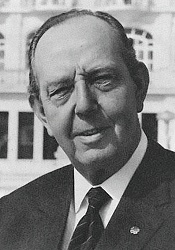 On the recommendation of designer Ronald W. Harker of Rolls-Royce, the British installed their Merlin 65 engine with 1,254 kW fuel injection, including a four-bladed propeller from a Spitfire, in the Mustang Mk.I (AL975/G) in October 1942. Thanks to these modifications, the performance of the aircraft increased significantly. An intercooler for a two-speed two-stage compressor designed by Sir Stanley George Hooker was also installed under the bow, and the modified machine was designated the Mustang X. There were two other modified machines that flew in November and December 1942. They were later powered and tested with newer Merlin engines. 70 or 71. A similar adjustment was made in November of the same year by North American Aviation itself by converting one P-51A to an unarmed XP-51B. This aircraft had a twelve-cylinder Packard V-1650-3 Merlin engine with Bendix-Stromberg fuel injection. These engines were built and supplied for license by NAA by the Detroit carmaker Packard. Installing an intercooler in a deeper cover on the lower part of the fuselage behind the wing (where there was already an enlarged radiator) turned out to be a more elegant option, leaving only a small air trap under the propeller cone.
On the recommendation of designer Ronald W. Harker of Rolls-Royce, the British installed their Merlin 65 engine with 1,254 kW fuel injection, including a four-bladed propeller from a Spitfire, in the Mustang Mk.I (AL975/G) in October 1942. Thanks to these modifications, the performance of the aircraft increased significantly. An intercooler for a two-speed two-stage compressor designed by Sir Stanley George Hooker was also installed under the bow, and the modified machine was designated the Mustang X. There were two other modified machines that flew in November and December 1942. They were later powered and tested with newer Merlin engines. 70 or 71. A similar adjustment was made in November of the same year by North American Aviation itself by converting one P-51A to an unarmed XP-51B. This aircraft had a twelve-cylinder Packard V-1650-3 Merlin engine with Bendix-Stromberg fuel injection. These engines were built and supplied for license by NAA by the Detroit carmaker Packard. Installing an intercooler in a deeper cover on the lower part of the fuselage behind the wing (where there was already an enlarged radiator) turned out to be a more elegant option, leaving only a small air trap under the propeller cone.
Since the summer of 1943, Mustangs with Merlin engines have been produced on production lines in California as NA-102 (P-51B-1-NA) and in Texas as NA-103 (P-51C-1-NT), which carried a total of four machine guns Browning M2 caliber 12.7 mm. The British designation for variants B and C was the Mustang Mk.III. Thanks to their range, these versions were able to accompany USAAF bombers over and over Berlin and back from March 1944. In the middle of this year began to produce a successful version of the P-51D with a V-1650-7 engine with an output of 1,265 kW and armament in the wings increased to six machine guns. In Britain, this type was referred to as the Mustang Mk.IV. Other design changes included a lowered ridge and a teardrop-shaped cockpit cover that improved the pilot’s view to the rear. During production, 136 copies were sent to Dallas for conversion to the reconnaissance version of the F-6D, while 10 two-seater TP-51Ds with double control were also created.
In the P-51K version, most (1,337 pieces) out of a total of 1,500 built aircraft had Aeroproducts propellers with a smaller diameter and different cockpit overlap installed. Later machines were additionally equipped with a launcher for a total of eight missiles. The remaining 163 aircraft were completed in a modification of the F-6K for photographic reconnaissance (weapons remained). Of this version, 594 pieces were handed over to the RAF under the designation Mustang Mk.IVA. Further development brought experimental lightweight machines XP-51F, G and J. War production ended with 555 aircraft version P-51H and 1,700 pieces from the deployed series P-51L based on the previous version. Type H with a Packard V-1650-9 engine with an output of up to 1632 kW was lighter than version D and reached a maximum speed of 782 km/h.
Commonweath Aircraft Corporation CA-17/18 Mustang
Two years after the British Purchasing Commission began working with North American Aviation, the Royal Australian Air Force (RAAF) has also begun to address the issue of new fighters. In the end, the NA P-51 Mustang was chosen as the new defensive aircraft, with the fact that it will be manufactured under license by the Australian company Commonweath Aircraft Corporation (CAC). The agreement between the NAA and the RAAF was concluded at the end of 1943, so nothing prevented the start of production on this continent. Under the agreement, the American company NAA supplied 100 pieces of unassembled P-51D machines, including about 80 Merlin engines from Packard. However, due to the long delay in this delivery, the first licensed Mustang did not get into the air until April 1945.
A total of eighty aircraft marked as CAC CA-17 Mustang Mk.20 were assembled from it, but it was too late for these machines to join the battles of World War II. The CAC company produced after the war about 120 aircraft newly designated as CA-18 Mk.21, 22 and 23. The individual models differed mainly from the type of engine installed. Packard V-1650-7 Merlin propulsion units were mounted in the fuselage of the CA-18 Mk.21, while the CA-18 Mk.23 was used by the British Rolls Royce Merlin 66 or 70. The medium type CA-18 Mk.22 was, unlike the previous two modified as a reconnaissance version of the F-6D. The last machine CA-18 Mk.23 left the factory gates in 1952.
Cavalier Mustang
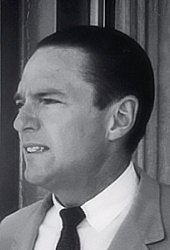 In 1957, Florida journalist David B. Lindsay founded Trans Florida Aviation Inc., which converted redundant P-51 military fighters to civilian high-performance business aircraft. The original name of these machines was the Trans-Florida Executive Mustang, which soon changed to the Trans Florida Aviation Cavalier Mustang.
In 1957, Florida journalist David B. Lindsay founded Trans Florida Aviation Inc., which converted redundant P-51 military fighters to civilian high-performance business aircraft. The original name of these machines was the Trans-Florida Executive Mustang, which soon changed to the Trans Florida Aviation Cavalier Mustang.
The Mustang obtained from the army’s surpluses was always first completely dismantled, then disarmed and prepared for subsequent reconstruction. The military equipment in the cockpit was dismantled and replaced by a second seat, the interior received luxurious leather upholstery, new avionics were installed, luggage compartments and finally the machine received civilian colors. The first aircraft rebuilt in this way took off in 1958. Three years later, in 1961, this machine was renamed the Cavalier 2000. The number in the name was to refer to the range in km. The company later offered its potential customers a total of five models: Cavalier 750, 1200, 1500, 2000 and 2500. They differed in fuel capacity and the number in the name again indicated the approximate range of the aircraft. The fact that it was almost a custom production is evidenced by the number of aircraft rebuilt in this way, of which there were only 20 in ten years of the company’s existence.
 During this time, the machines were made several modifications in the design of the aircraft so that the machine complies with FAA regulations. These were mainly the already mentioned avionics, then the autopilot, second seat, ventilation holes in the cockpit located in the cabin frame, high-pressure oxygen system, luggage door in the fuselage and rudder, which was now 35.5 cm higher than the original. Depending on the type of machine, additional tanks were also installed either on the wingtips or on the carriers under the wings. The carriers carried two 227 l tanks, while at the ends of the wings were placed tanks with a volume of 363 l.
During this time, the machines were made several modifications in the design of the aircraft so that the machine complies with FAA regulations. These were mainly the already mentioned avionics, then the autopilot, second seat, ventilation holes in the cockpit located in the cabin frame, high-pressure oxygen system, luggage door in the fuselage and rudder, which was now 35.5 cm higher than the original. Depending on the type of machine, additional tanks were also installed either on the wingtips or on the carriers under the wings. The carriers carried two 227 l tanks, while at the ends of the wings were placed tanks with a volume of 363 l.
North American Aviation bought Cavalier for the famous test pilot R. A. “Bob” Hoover in 1962, with whom he was to promote the NAA’s reputation on air days. The second was taken in 1971 to replace a previous machine destroyed in a ground accident. This was due to an explosion of the oxygen cylinder. The new aircraft was soon named the “Ole Yeller” and Hoover flew on it until the late 1990s, when he retired. In 1997, he sold it to his good friend John Bagley of Rexburg, Idaho. The handsome yellow man still flies to this day and has his home hangar in the Legacy Flight Museum on the outskirts of the already mentioned city of Rexburg. Trans Florida Aviation Inc. in 1967, due to the strong identity of its machines, it was renamed Cavalier Aircraft Corporation and operated under this name until its termination.
Armed cavaliers
Cavalier F-51D
In 1967, the company entered into a contract with the US Department of Defense to create a military version of the F-51D for export. These machines had most of the improved features of civilian aircraft, they were only adapted to fighters. Upon completion of the optimization, the Cavalier F-51D Mustang was designated and all nine single-seater (F-51D) and two two-seater (TF-51D) specimens were sold to Bolivia under the Peace Condor program. In 1968, the US military ordered two copies of these machines for testing pilot aircraft in the Cheyenne Helicopter program. After the end of the program, these machines were still used in the NAS China Lake project. These were test flights in which the effectiveness of the use of two 106 mm non-slip cannons installed at the ends of the wings was determined. Due to the dangerous and one-off nature of weapons, this test of ground combat fighters eventually became just another dead end in the development of combat machines. One of these aircraft has been preserved and is still exhibited in a modified form in the Air Force Armament Museum at the Eglin Air Base in Florida.
Cavalier Mustang II
Simultaneously with the F-51D, there was also the development of its successor designed for direct air support and counterinsurgency operations. Compared to the previous model, it had improved avionics, reinforced wings to carry more air containers for various weapons located on the other four hangers, and a modified Packard Merlin V-1650-724A engine. After completing the development process, the company began to refer to this model as the Cavalier Mustang II. A total of ten pieces were produced in two production series. The first of 1968, built for Salvador, had additional tanks at the ends of the wings for longer range. The second, manufactured in 1972-3 and intended for Indonesia, unfortunately no longer had these tanks, due to restrictions from the US State Department.
Cavalier Turbo Mustang III/Piper PA-48 Enforcer
In 1968, the company installed a Rolls-Royce Dart 510 turboprop engine in the airframe of a Mustang II. This privately funded prototype, like the previous type, was intended for the CAS / COIN mission. The machine had a radically increased power, payload and thanks to the already mentioned turboprop engine also reduced maintenance costs. The propulsion unit, aircraft kite and pilot were protected by Bristrol ceramic armor. Despite the number of business offers from the United States Air Force, neither the US military nor foreign buyers bought a single copy. Cavalier Aircraft Corporation has long faced the problem of small production capacity and was therefore looking for a company capable of mass production. Finally, the Mustang III project (known as The Enforcer since 1970) was sold to Piper Aircraft in 1971. Cavalier Aircraft Corporation ceased operations in the same year, allowing Lindsay to assist in the research of this machine, now known as the Piper PA-48 Enforcer. To complete the contract for Indonesia, Lindsay founded a new company, Field Services Inc., which still exists today.
Piper leased the Lycoming T55-L-9 engine from the USAF and performed about 200 test hours on one aircraft. It was a power unit that Lindsay originally wanted to use, but he probably couldn’t get. In 1971, the company built two machines, which, along with many other improvements, significantly modified the aircraft’s airframe and fitted them with Lycoming YT55-L-9A turboprop engines. It was a single-seat machine PE-1 and the second PE-2 designed for training with double control. Prior to the Pave COIN tests, the PE-2 was destroyed on July 12 during an accident off the coast of Florida due to the flutter of the elevator rudder. Although PE-1 performed well during the Pave COIN tests, Piper was unable to secure a contract with the USAF.
After eight years of demanding lobbying by Lindsay and Piper in Congress, they finally managed to persuade the Air Force to reconsider its view of these aircraft. In 1979, Congress finally allocated $ 12 million to produce two new prototypes so that the Air Force could conduct further aviation tests. The aircraft, newly designated the PA-48, were tested by the USAF in 1983-4 at Eglin (Florida) and Edwards (California) air bases, and were piloted exclusively by Piper factory pilots. Although the result of the Pave COIN tests was the same as in 1971 and the aircraft work well in their intended role, the Air Force again decided not to enter into a contract with Piper.
Red Tails in Moravia
On returning from the second raid of the Allied Forces, which took place on August 27, 1944, about fifteen machines belonging to the 332nd Fighter Group were released from the escort fighter. After Captain Squadron commander. Melvin T. Jackson spotted an airplane flying from the airport in Prostějov, pilots attacking idle aircraft. Although the anti-aircraft defense immediately triggered the fire, they managed to destroy a total of fourteen Ju-52s, four Ju-87s and four He 111s at this and neighboring airport in Kostelec na Hané. In addition, another Ju-52, four Ju-87s, one He 111 and even one six-engined Me 323 Giant. However, according to witnesses, they managed to damage not just one, but two machines Me 323 Giant. This event also refers to the Red Tails scene, but unlike the fact, only two pilots take part in the action.
Photogallery:
Version:
- NA-73X
- NA-73
- NA-83 (Mk.I)
- NA-91 (Mk.IA)
- P-51A (Mk.II)
- NA-91
- NA-97 (NA A-36A)
- Rolls-Royce Mustang Mk.X
- XP-51B
- P-51B (Mk.III)
- P-51D (Mk.IV)
- TP-51D
- P-51E
- XP-51F
- P-51F
- P-51G
- P-51H
- P-51J
- P-51K (Mk.IVA)
- P-51L
- Cavalier 750
- Cavalier 1200
- Cavalier 1500
- Cavalier 2000
- Cavalier 2500
License version:
- CAC CA-17 Mk.20
- CAC CA-18 Mk.21
- CAC CA-18 Mk.22
- CAC CA-18 Mk.23
Derived types:
- XP-82
- P-82B
- P-82C
- P-82D
- P-82E
- F-82F-H
- Cavalier F-51D
- Cavalier Mustang II
- Cavalier Mustang III
- Piper PA-48 Enforcer
Replicas:
- Cameron Grand 51 Mustang
- Papa 51 Thunder Mustang
- ScaleWings SW51 Mustang
- Stewart S-51D Mustang
- Titan T-51 Mustang
North American P-51D Mustang
| Manufacturer | North American Aviation |
| Crew | 1 pilot |
| Airplane type | Low wing |
| Engine | Packard V-1650-7 |
| Engine power | 1 265 kW |
| Speed |
|
| Length | 9,83 m |
| Span | 11,28 m |
| Height | 4,08 m |
| Wing area | 21,67 m² |
| Weight |
|
| Available | 12 771 m |
| Flying range |
|
| Conventional weapons | 6 x machine gun M2 Browning |
| Capacity of bombs | maximum 408 kg** |
| Capacity of missiles | 6 x HVAR |
*with additional tanks
**two 45 kg bombs, two 113 kg bombs on hangers under the wings or one 227 kg bomb
source:
http://hloubkari.wordpress.com/?s=p-51
https://en.wikipedia.org/wiki/Henry_Self
https://en.wikipedia.org/wiki/Bob_Hoover
https://en.wikipedia.org/wiki/Cavalier_Mustang
https://en.wikipedia.org/wiki/Piper_PA-48_Enforcer
https://www.mustangsmustangs.net/p-51/variants/cac
https://www.valka.cz/Cavalier-F-51-Mustang-II-t40012
http://cs.wikipedia.org/wiki/North_American_P-51_Mustang
https://en.m.wikipedia.org/wiki/North_American_P-51_Mustang
https://acesflyinghigh.wordpress.com/2016/06/04/commonwealth-aircraft-corporation-cold-war-flyers-part-i

